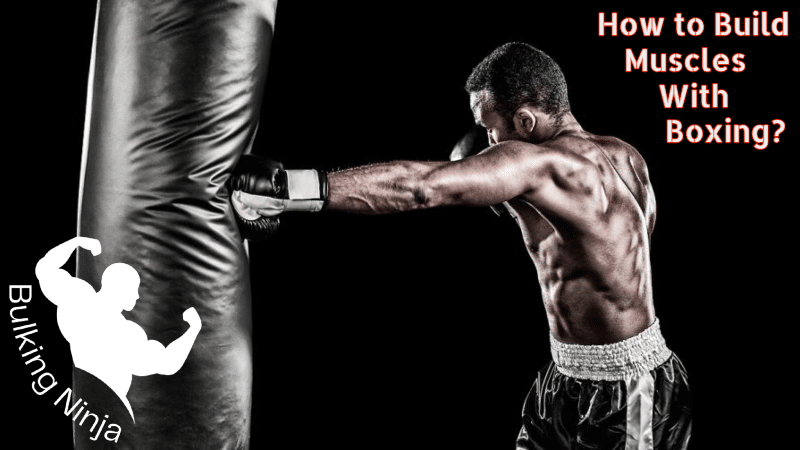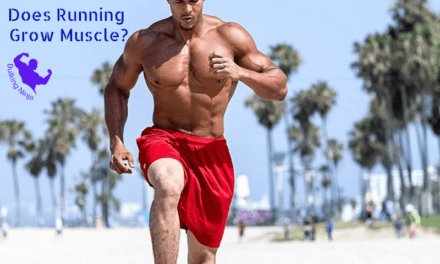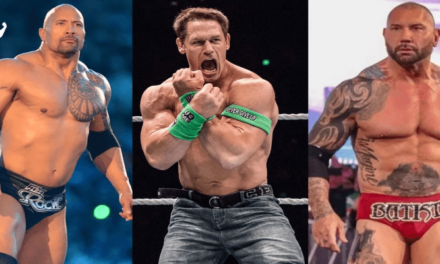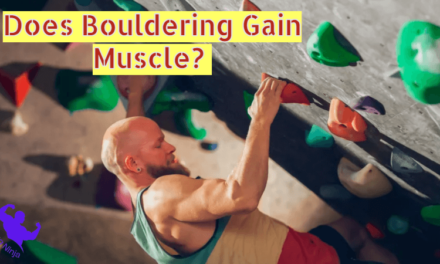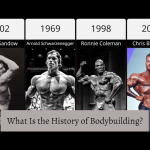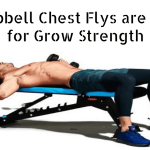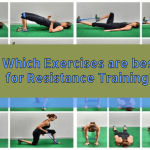Welcome to a dynamic journey where strength meets skill: the world of building muscle with boxing. Beyond its reputation as a combat sport, boxing holds the key to a comprehensive and invigorating workout that targets not only cardiovascular endurance and agility but also muscle development.
Whether you’re a seasoned pugilist or a newcomer to the sport, the art of boxing offers an innovative and effective approach to sculpting and toning your body.
In this guide, we will delve into the strategic fusion of boxing techniques and discuss how to build muscles with boxing, uncovering the science behind this powerhouse workout and providing you with a roadmap to achieving your fitness goals while mastering the art of the sweet science. Read more about Best Sports for Building Muscles.
Table of Contents
- How to Build Muscles With Boxing?
- Do Muscles Grow From Boxing?
- Common Muscle-Building Workouts in Boxing Training
- Muscle-Building Exercises and Boxing Training
- Specific Muscle Groups and Boxing Impact
- How to Maximize Muscle Growth From Boxing?
- Frequently asked Question
- How do boxers build muscles?
- What muscle is best for boxing?
- What is better gym or boxing?
- Does boxing build biceps?
- Does boxing build muscle in arms?
- How do boxers build muscle without lifting weights?
- Does boxing burn fat or build muscle?
- Does boxing build abs?
- Does shadow boxing build muscle?
- Does boxing increase testosterone?
- Conclusion
How to Build Muscles With Boxing?
Engaging in the art of boxing goes far beyond the confines of a mere sport; it’s a taxing yet exhilarating journey that immerses the entire human body into action. Through calculated movements and strategic maneuvers, boxers activate various muscle groups, each playing a vitally important role in executing a powerful strike.
The serratus anterior, often referred to as the “boxer’s muscle,” provides the necessary stability for controlled movements, while the latissimus dorsi, located in the back, contributes to the force behind every punch. The engagement of abdominal muscles and biceps brachii further amplifies the potency of these strikes, turning mere motion into impactful force.
The calves, too, play a pivotal part, generating the explosive power needed for quick footwork and swift movements that define successful boxing. Yet, the journey towards building muscle through boxing extends beyond individual muscle groups. It’s a holistic transformation that involves not only the physical body but also the mind.
Boxers learn to sync their breathing with their movements, optimizing oxygen flow to muscles, enhancing endurance, and promoting muscle growth. The rhythmic dance of footwork, the ducking and weaving, all engage the core musculature, cultivating not only strength but also the stability required for maintaining balance and effectively countering opponents. Read more about Bodyweight exercises for grow muscles.
In the ring, boxers wield a comprehensive arsenal of strength. The deltoids, those shoulder muscles, play a significant role in absorbing impact and delivering controlled punches. Meanwhile, the pectoral muscles, known for their contribution to upper body strength, assist in the execution of controlled jabs and hooks. Each muscle works harmoniously, like a symphony, contributing to the boxer’s ability to deliver powerful strikes and adeptly defend against oncoming attacks.
As the sweat-drenched training sessions progress and the punches become more precise, the muscles respond, growing in both size and endurance. It’s this consistent dedication to refining technique and honing the body that defines the art of building muscle with boxing. Beyond the physical changes, there’s a mental transformation – a mindset that values discipline, precision, and the pursuit of excellence. Let’s Start Your Bulking Journey with Best Easy High Protein Breakfasts for Muscle Building.
Do Muscles Grow From Boxing?
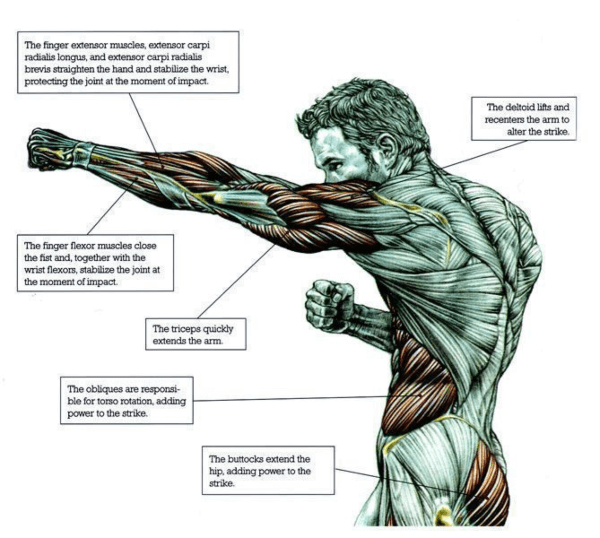
Although a boxing round presents a notably rigorous full-body exercise, the growth of muscles isn’t uniform across the board. Variations in muscle mass, their responsiveness to distinct stimuli, and the nature of boxing movements lead to certain muscles benefiting more significantly from boxing training than others. Futher more read Martial Arts for Grow Muscle.
Boxing build Calves Muscles
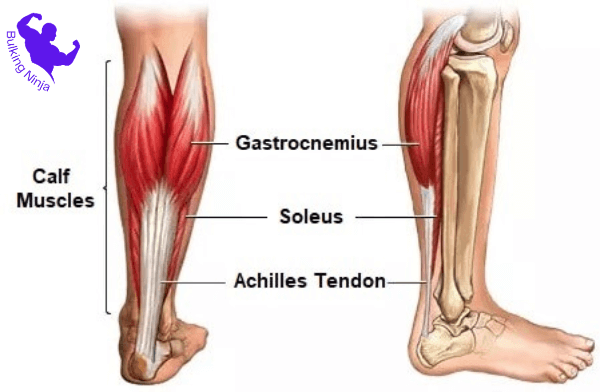
In the realm of building muscle with boxing, the intricate interplay of biomechanics comes into play. A boxing coach’s wisdom reveals that the key to a potent strike lies not solely in the upper body’s exertion, but in leveraging the ground’s resistance to channel force through the arms. Delving deeper, the muscular dynamics come to the forefront. Let’s Start Your Bulking Journey with How Do Sprinters Gain Muscle.
The calves, positioned closest to the ground, naturally shoulder a significant role in this process. Consequently, during boxing-focused training sessions, these muscles take center stage, subject to the most vigorous stimulation.
Exploring the anatomy further, it’s intriguing to observe the gastrocnemius and soleus muscle fibers – both possess a unique responsiveness. Their growth thrives on higher volume engagement rather than intense resistance.
This attribute aligns seamlessly with boxing demands. Boxers repeatedly activate their calves in rapid succession, executing strikes, evasive maneuvers, and fluid footwork, all within mere seconds. As such, the marriage of biomechanics and muscle physiology becomes evident, guiding boxers in sculpting their bodies to perfection through well-informed techniques. Let’s Start Your Bulking Journey with Signs of Muscle Building.
The Core Muscles
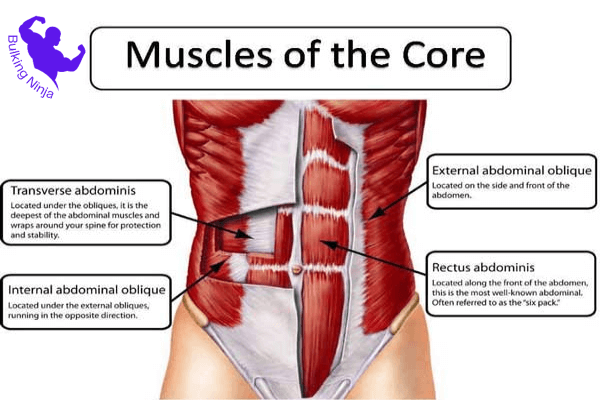
Within the context of learning how to build muscle with boxing, the core’s intricate musculature plays a pivotal role. This complex web encompasses the anterior abdominal muscles and stabilizing muscle groups along the back. It’s important to recognize that due to their strategic placement, these muscles are engaged in virtually every movement an individual makes to some degree. Lets Start your fitness journey with different ways to gain muscle without weights lifting.
This significance is amplified for boxing athletes. Their reliance on the core is paramount, serving as the conduit for transferring force from legs to arms or absorbing blows without yielding. While the core muscles may not undergo hypertrophy in an overtly noticeable manner, the impact of boxing training becomes evident over time.
Practitioners commonly observe the emergence of a more robust and potent set of abdominal muscles, accompanied by the added benefit of heightened injury resistance as the core adapts to forceful demands. This intricate relationship between the core’s resilience and boxing’s training techniques underscores its crucial role in forging a robust and capable physique. Futher more study Important Types of Push ups for Grow Muscle.
How Quadriceps and the Hamstrings muscles grow from boxing?
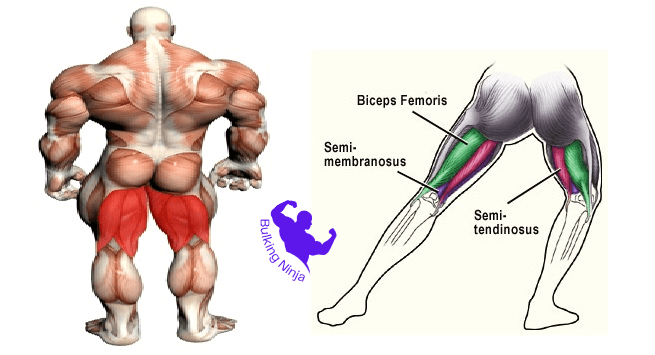
In the pursuit of mastering how to build muscle with boxing, various muscle groups become pivotal players. Just as the calves contribute to the potency of a well-aimed strike, the quadriceps femoris and hamstrings emerge as equally vital forces.
Nestled around the upper thigh, their strategic placement maximizes motion and force generation. These muscles shine as key players in leg-related movements, spanning from basic walking to fortifying the body for an incoming impact or propelling a punch.
The synergy of consistent stimulus is noteworthy here. The quadriceps and hamstrings, touted as some of the largest muscle groups within the human body, encounter frequent engagement due to boxing’s demands.
This symbiotic relationship between rigorous training and muscle growth leads boxers to discern substantial enhancements in mass and power within these muscle groups. As the journey unfolds, it’s this nuanced understanding of muscular dynamics and strategic training that transforms boxers into athletes capable of harnessing the true strength of their bodies. Futher more study important of indoor Cycling for Grow Muscle.
The Hip Flexors Muscles
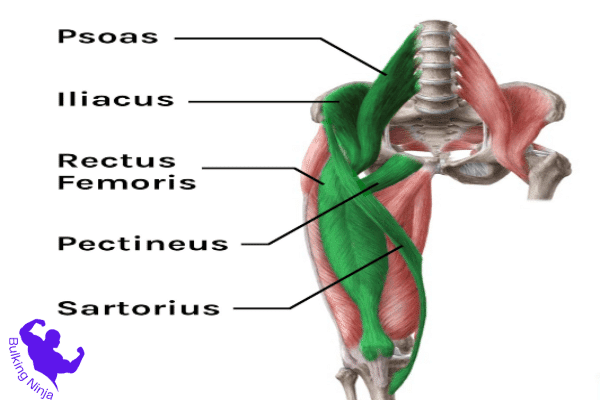
The quest for discovering how to build muscle with boxing unveils various critical biomechanics. Among these, the rotation and movement of the hips emerge as a pivotal factor. In the realm of boxing, a well-executed strike necessitates the precise twisting of the pelvis and waist, channeling force effectively through the body for maximum impact.
Additionally, the rapid motions inherent in the sport, such as weaving, dodging, and maintaining fluid movement cadence, hold a loose connection to the recruitment of hip flexors. Despite the unlikelihood of encountering significant muscular hypertrophy in these muscles, boxers observe noteworthy enhancements in the strength, coordination, and endurance of their hip flexors.
This transformation within the realm of boxing training underscores the intricate balance between biomechanics and muscular adaptation, driving boxers towards mastering not only the art of striking but also the finesse of movement.
Can Boxing Gain Deltoid or Shoulder Muscle?
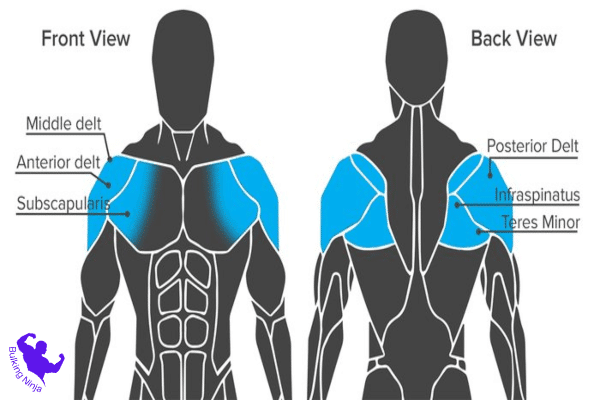
Exploring the realm of how to build muscle with boxing delves into the intricate dynamics of the deltoid muscle, commonly known as the shoulder muscle. This muscular structure is intricately divided into three axial heads. Among them, the anterior deltoid head stands out for its role in stabilizing and orchestrating arm movements during exercise.
Within the context of boxing, the anterior deltoid head assumes a dual role. It not only aids in the translation of force through the arm during a punch but also serves to uphold the boxer’s protective guard within the ring.
While the other two deltoid heads share in these responsibilities to a certain extent, it’s the anterior deltoid head that encounters the most substantial level of stimulus.
Consequently, it undergoes the greatest development in response, symbolizing the nuanced connection between boxing’s demands and muscular growth. This understanding deepens the narrative of muscle development within boxing, underlining the profound interplay between sport-specific movements and the anatomy of strength.
The Musculature of the Upper Arm
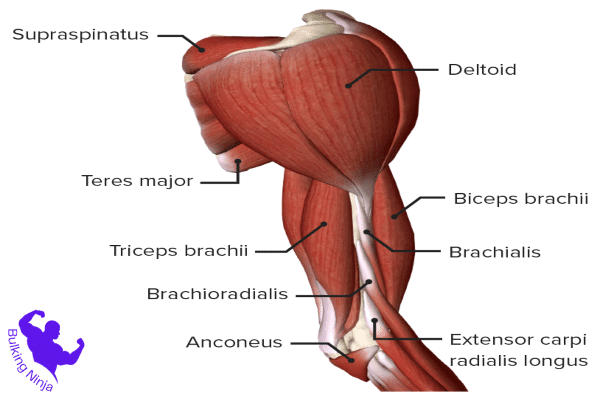
The upper arm’s intricate composition. Within this domain, the biceps brachii, triceps brachii, and brachialis emerge as key players – three distinct muscle groups that come into significant action during any arm-related movement.
For boxers, the manifestation of this engagement is apparent. The brachialis takes on its role during a jab, while the biceps come alive during an upper-cut. Meanwhile, the triceps also make their mark, contributing notably to humeral adduction – a pivotal aspect involving the arm moving away from the body.
The rhythm of consistent muscle recruitment aligns harmoniously with the arm’s characteristic low-body fat content. Additionally, the relative size of these muscle groups accentuates the effect.
Consequently, boxing athletes often showcase well-defined and relatively muscular upper arms, a testament to the symbiosis between their training and inherent muscle development. The narrative of muscle growth within the sport intertwines with the art of boxing itself, portraying the intricate dynamics of functional strength in motion.
Common Muscle-Building Workouts in Boxing Training
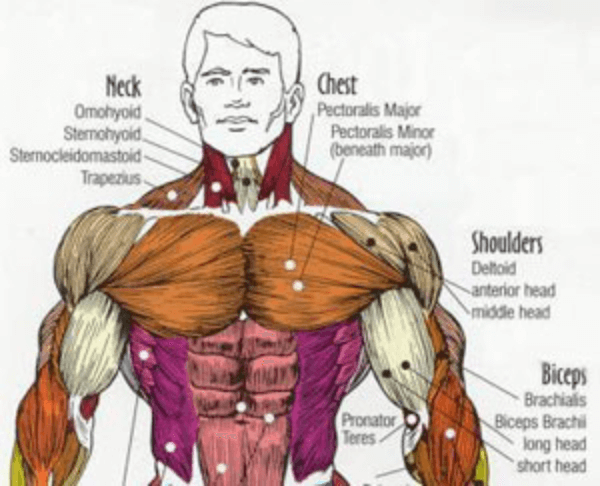
Building muscle through boxing training is a multi-faceted journey that encompasses a variety of exercises, techniques, and muscle groups. Expert boxers and trainers understand the intricate relationship between boxing and muscle development, creating a synergy that leads to impressive results.
In this comprehensive guide, we’ll delve into the key aspects of how to build muscle with boxing, exploring the range of muscle-building exercises, the physiological effects of training, and the strategic approaches to maximize muscle growth.
Muscle-Building Exercises and Boxing Training
The foundation of building muscle with boxing lies in a diverse range of exercises and training methodologies. From Bag Work and Shadow Boxing, which engage the entire body, to Full Body Workouts that sculpt muscles systematically, these exercises form the backbone of effective muscle-building strategies. These exercises not only enhance muscle mass but also contribute to overall strength, endurance, and agility, all of which are crucial in boxing.
Muscle Groups and their Role
Understanding the intricate interplay of muscle groups is essential in harnessing the full potential of muscle growth in boxing. Muscle groups like the Upper Arm, including Biceps Brachii, Triceps Brachii, and Brachialis, play a pivotal role in generating force and executing precise movements.
The engagement of these muscle groups is further complemented by the involvement of the Core Muscles, which provide stability, power transfer, and resistance to blows.
Optimizing Muscle Growth
To achieve remarkable muscle growth with boxing, several factors come into play:
Striking and Muscle Engagement
The act of striking, involving precise movements and force generation, triggers the recruitment of various muscle groups, promoting their development over time.
High-Intensity Training
The dynamic nature of boxing training, with its explosive bursts of energy, aligns well with high-intensity training principles, fostering both muscle endurance and power.
Holistic Development
Boxers experience muscle growth in conjunction with enhanced cardiovascular fitness, endurance, and agility, creating a well-rounded physique suited for the sport.
Physiological Adaptations and Muscle Development
As boxers progress in their training, they witness remarkable physiological adaptations that contribute to muscle growth:
Muscular Hypertrophy
While not as pronounced as in bodybuilders, consistent boxing training triggers muscular hypertrophy, resulting in lean and functional muscle development.
Endurance and Strength
The fusion of cardiovascular demands and resistance training fosters remarkable improvements in endurance and strength, enabling boxers to perform at peak levels.
Specific Muscle Groups and Boxing Impact
Different muscle groups experience distinct effects from boxing training:
Calves and Core
The frequent recruitment of calf muscles and core stabilization during movements like weaving and dodging not only builds muscle but also refines coordination and stability.
Upper Body Muscles
The shoulders, chest, and arms play a crucial role in boxing movements like striking, blocking, and maintaining guard, contributing to well-defined upper body strength.
Incorporating Varied Exercises
Achieving muscle growth with boxing involves strategic exercise selection:
Mountain Climbers
This exercise, popular among boxing athletes, enhances core strength and engages calf muscles, essential for controlled movements and balance.
Push-Ups
An evergreen exercise in boxing training, push-ups target the chest, serratus, deltoids, and triceps, promoting upper body muscle growth and functional strength.
Jump Rope
Beyond enhancing agility, the jump rope contributes to developing calf muscles and core stability, further reinforcing the boxer’s foundation.
How to Maximize Muscle Growth From Boxing?
While exercise undoubtedly plays a crucial role in fostering muscle growth within the realm of boxing, it alone isn’t the sole guarantee of such development.
Acknowledging other facets of a boxer’s lifestyle becomes imperative, encompassing factors like adequate recovery time for muscles and provisioning them with essential resources.
While ensuring an ample intake of protein and calories is a step in the right direction, it’s equally important for boxers to allocate intervals between training sessions, a challenging feat given the rigorous demands of competitive boxing.
To navigate this delicate balance and avert the pitfalls of overtraining, contemporary boxers have embraced a practice called periodization. This method involves varying the intensity and nature of exercises employed, ensuring the body can recuperate optimally, leading to sustainable and balanced muscle growth.
Frequently asked Question
How do boxers build muscles?
Boxers build muscles through targeted exercises, progressive resistance training, high-intensity interval training, proper nutrition with a focus on protein intake, maintaining a caloric surplus, prioritizing hydration, ensuring adequate rest and recovery, following periodization training, and sometimes incorporating supplements to support muscle growth and repair.
What muscle is best for boxing?
Most important muscles for boxing are,
Core muscles
Upper arm muscles (Biceps, Triceps, Brachialis)
Deltoid muscles
Calves
Quadriceps and Hamstrings
Hip flexors
Serratus anterior
Back muscles
Chest muscles
Core stabilization muscles
What is better gym or boxing?
The choice between the gym and boxing depends on your fitness goals and preferences:
Gym
Offers a wide range of equipment for various workouts.
Provides a controlled environment for strength training and cardio exercises.
Allows customization of workouts based on individual goals.
Suitable for those focused on general fitness, bodybuilding, or weight loss.
Boxing
Combines cardio, strength, and agility training in one sport.
Enhances functional strength, endurance, and coordination.
Teaches self-defense skills and offers a competitive outlet.
Can be more engaging and motivating for some individuals.
Ultimately, the better option depends on your fitness objectives, interests, and the specific benefits you seek.
Does boxing build biceps?
Yes, boxing can contribute to the development of biceps. While boxing primarily emphasizes functional strength, endurance, and overall athleticism, the repeated striking and punching motions involved in boxing do engage the biceps muscles. However, if your primary goal is significant biceps muscle growth, supplementing your boxing training with targeted biceps-focused resistance exercises at the gym may be more effective.
Does boxing build muscle in arms?
Yes, boxing can build arm muscles due to the repetitive motions involved in punching, blocking, and defensive maneuvers. While boxing primarily emphasizes functional strength and overall athleticism, consistent training can lead to muscle development in the biceps, triceps, and forearm muscles, enhancing upper body strength and functionality.
However, for significant arm muscle growth, adding focused resistance exercises at the gym can be advantageous.
How do boxers build muscle without lifting weights?
Numerous boxers incorporate calisthenics and bodyweight exercises into their boxing training regimen. These routines encompass a range of movements such as push-ups, pull-ups, bodyweight squats, and abdominal exercises. When executed at a substantial volume and taken close to the point of muscle fatigue, these exercises have the potential to foster muscle growth.
Does boxing burn fat or build muscle?
Boxing is a versatile exercise that both burns fat through high-intensity training and builds muscle through repetitive movements and functional exercises. It combines cardiovascular benefits with muscle engagement for a well-rounded fitness approach.
Does boxing build abs?
Yes, boxing can contribute to the development of abdominal muscles, commonly referred to as abs. The dynamic movements involved in boxing training, such as rotating the torso for punches and maintaining core stability during various maneuvers, engage the abdominal muscles.
These movements can help strengthen and define the muscles of the core over time, leading to improved abdominal muscle development. However, for more focused and noticeable ab muscle growth, combining boxing with targeted core exercises can be beneficial.
Does shadow boxing build muscle?
Yes, shadow boxing can contribute to muscle development, engaging muscles in the arms, shoulders, back, core, and legs. While not as effective as resistance training, consistent and intense sessions can enhance muscle endurance, tone, and functional strength.
For substantial muscle growth, combining shadow boxing with targeted resistance exercises and proper nutrition is recommended.
Does boxing increase testosterone?
Yes, engaging in boxing and similar high-intensity exercises can lead to a temporary increase in testosterone levels. Intense physical activities like boxing stimulate the body’s hormonal response, including a rise in testosterone.
However, the duration and extent of this increase can vary among individuals. While boxing can provide a short-term testosterone boost, long-term changes in testosterone levels may require consistent exercise, proper nutrition, and overall lifestyle management.
Conclusion
As this comprehensive guide illustrates, building muscle with boxing is a nuanced journey, where discipline, technique, and strategic training converge. From muscle-building exercises to the development of specific muscle groups, boxing offers a holistic approach to muscle growth.
By tapping into the synergy between the sport and muscle development, athletes can sculpt a lean, powerful, and agile physique that not only excels in the ring but also exemplifies the art of functional strength.
